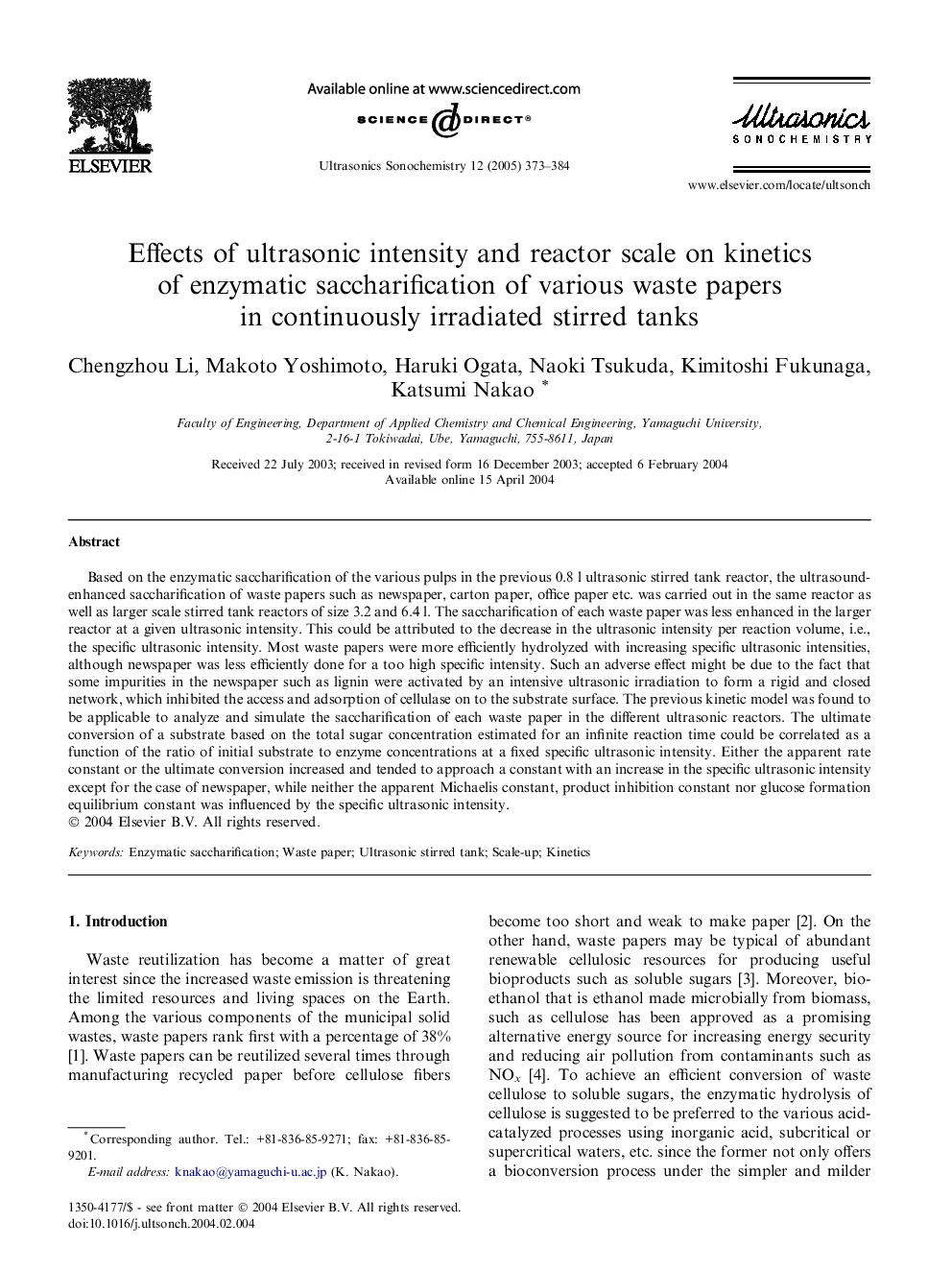| Article ID | Journal | Published Year | Pages | File Type |
|---|---|---|---|---|
| 10566253 | Ultrasonics Sonochemistry | 2005 | 12 Pages |
Abstract
Based on the enzymatic saccharification of the various pulps in the previous 0.8 l ultrasonic stirred tank reactor, the ultrasound-enhanced saccharification of waste papers such as newspaper, carton paper, office paper etc. was carried out in the same reactor as well as larger scale stirred tank reactors of size 3.2 and 6.4 l. The saccharification of each waste paper was less enhanced in the larger reactor at a given ultrasonic intensity. This could be attributed to the decrease in the ultrasonic intensity per reaction volume, i.e., the specific ultrasonic intensity. Most waste papers were more efficiently hydrolyzed with increasing specific ultrasonic intensities, although newspaper was less efficiently done for a too high specific intensity. Such an adverse effect might be due to the fact that some impurities in the newspaper such as lignin were activated by an intensive ultrasonic irradiation to form a rigid and closed network, which inhibited the access and adsorption of cellulase on to the substrate surface. The previous kinetic model was found to be applicable to analyze and simulate the saccharification of each waste paper in the different ultrasonic reactors. The ultimate conversion of a substrate based on the total sugar concentration estimated for an infinite reaction time could be correlated as a function of the ratio of initial substrate to enzyme concentrations at a fixed specific ultrasonic intensity. Either the apparent rate constant or the ultimate conversion increased and tended to approach a constant with an increase in the specific ultrasonic intensity except for the case of newspaper, while neither the apparent Michaelis constant, product inhibition constant nor glucose formation equilibrium constant was influenced by the specific ultrasonic intensity.
Related Topics
Physical Sciences and Engineering
Chemistry
Chemistry (General)
Authors
Chengzhou Li, Makoto Yoshimoto, Haruki Ogata, Naoki Tsukuda, Kimitoshi Fukunaga, Katsumi Nakao,
